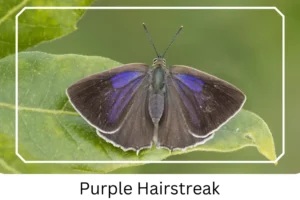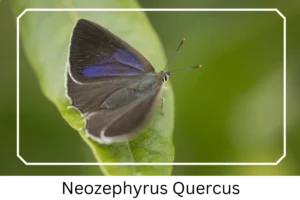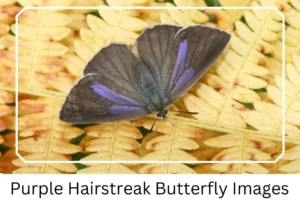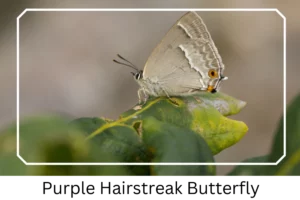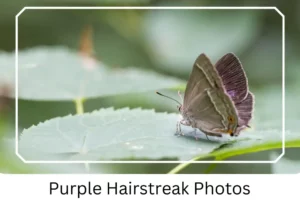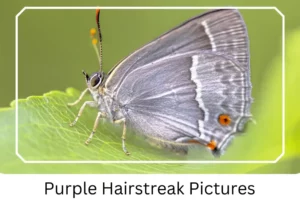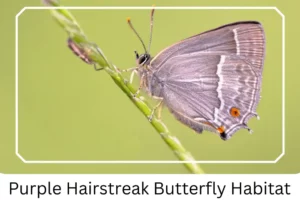Purple Hairstreak (Neozephyrus quercus)
The Purple Hairstreak is a fascinating butterfly species, renowned for its elusive nature and beautiful appearance. Often found in the canopies of oak trees during the sunny months of July and August, this species offers a glimpse into the complex ecosystems of forests and parks. With its distinct subspecies and varied life stages, the Purple Hairstreak presents a unique subject of study for enthusiasts and scientists alike.
Scientific Classification
- Family: Lycaenidae
- Genus: Neozephyrus
- Scientific Name: Neozephyrus quercus
Overview
Belonging to the family Lycaenidae, the Purple Hairstreak (Neozephyrus quercus) thrives in a wide range of habitats across Europe and parts of Asia and Africa. This butterfly’s lifecycle, from egg to adult, showcases remarkable adaptations and characteristics, contributing to its survival and propagation in its natural environment. This piece aims to explore the detailed aspects of its life stages, including the caterpillar, pupa, and adult butterfly, alongside providing insightful quick facts and identification tips.
Description and Identification
Caterpillar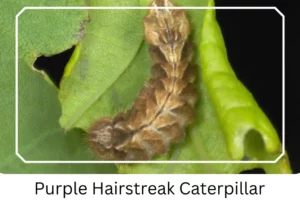
The caterpillar of the Purple Hairstreak exhibits a leech-like shape, broad and flat, with a color palette ranging from beige yellow to tan orange, interspersed with shades of brown. A distinctive white marking runs centrally along the body, complemented by a slender black line. The surface of the body is adorned with fine, almost imperceptible hairs.
Pupa
Transitioning into the pupal stage, the chrysalis begins with a green hue, gradually darkening to an orange-brown, dotted with dark brown spots. This stage is crucial for the butterfly’s development, occurring over winter and culminating in the emergence of the adult butterfly in spring or early summer.
Adult Butterfly
Sexual Dimorphism: The adult Purple Hairstreak shows a subtle sexual dimorphism. Males boast a vibrant purplish sheen on their dorsal wing surface, while females display distinctive patches primarily on their forewings.
Color and Appearance: In its resting state, with wings closed, the butterfly reveals a soft grey underside, marked by a central white streak bordered in black. The hindwings feature short, tail-like extensions and a pair of orange spots near the base, adding to the species’ distinctive look.
Average Wingspan: The Purple Hairstreak has an average wingspan ranging from 37 to 39 mm (1.45 – 1.53 in), allowing for efficient and agile flight among the treetops.
Flight Pattern: Characterized by its active flight, the Purple Hairstreak is most commonly observed fluttering at heights well above the ground, navigating the air currents with precision and grace.
Eggs
The eggs of the Purple Hairstreak are spherical, white, and possess a coarse texture. They are laid individually, highlighting the species’ selective breeding habits.
Quick Facts | |
| Distribution | Found across much of Europe, northern Africa, Anatolia, Caucasia, and Transcaucasia. |
| Habitat | Prefers wooded areas, hedgerows, and parks. |
| Lifespan of Adults | Can live up to 10 days. |
| Host Plants | Relies on various oak species (Quercus) for nourishment. |
| Adult Diet | Primarily feeds on honeydew, with females occasionally consuming flower nectar during egg-laying. |
How to Identify Purple Hairstreak?
Identifying the Purple Hairstreak butterfly requires a keen eye and an understanding of its unique characteristics. Look for its fluttering high in the oak canopies, a behavior that distinguishes it from other species. The adult butterfly’s size and the distinctive color patterns, especially the purplish sheen in males and the white streak bordered by black on the underside of the wings, are key identification markers. Furthermore, the presence of tail-like extensions and orange spots on the hindwings are indicative of the Purple Hairstreak. Familiarizing yourself with these features and observing the butterfly’s active flight pattern are crucial steps in accurately identifying this elusive species.
Did You Know?
- Despite its vibrant appearance, the Purple Hairstreak is notoriously difficult to spot because it prefers to fly around the tops of oak trees, often blending into the foliage.
- This butterfly is a vital part of the ecosystem, contributing to pollination and serving as a food source for predators, illustrating the interconnectedness of forest habitats.
Conclusion
The Purple Hairstreak butterfly, with its unique lifecycle, striking appearance, and fascinating behavior, serves as a captivating subject for study and observation. By understanding its characteristics and habitat, we can appreciate the complexity of the ecosystems it inhabits and the role it plays in maintaining biodiversity. As we continue to explore and learn about species like the Purple Hairstreak, we are reminded of the beauty and intricacy of the natural world.
Purple Hairstreak Pictures

Scientific Classification

- Family: Lycaenidae
- Genus: Neozephyrus
- Scientific Name: Neozephyrus quercus

